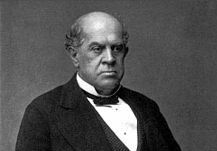How Malbec got to Argentina – via Chile

It is not generally appreciated on the European side of the Atlantic (nor, I suspect, north of the Rio Grande) that Malbec arrived in Chile before it reached Argentina. Independence in the early nineteenth century brought sufficient stability for the land-owning classes, still powerful today, to travel to Europe and return with newfound admiration for French wines.
The Chilean authorities were inspired to import French wine expertise in the form of French specialists such as René Lefebvre, Claudio Gay and Michel Aimé Pouget, according to a detailed paper written by Argentine historian at the University of Santiago, Pablo Lacoste). A Sociedad Nacional de Agricultura was founded in 1838 followed by the Quinta Normal de Santiago in 1841, modelled on the École Normale Supérieure in Paris and designed to train local farmers. One of its important activities was importing a wide range of plant material from Europe, including French vine cuttings, particularly those from Bordeaux. It is thought that Malbec first arrived in Santiago in the mid 1840s.
At that time a visionary Argentine who was to go on to become president, Domingo Faustino Sarmiento (1811-88, pictured), was in political exile in Chile. Having been born in the vine-growing province of San Juan, Argentina, he was particularly interested in wine. When he returned to Argentina in 1850 one of his many proposed reforms was that Argentina should have its own agricultural Quintas Normales. On 17 April 1853 official local government approval was given for the establishment of the Quinta Normal on the site now occupied by Government House in Mendoza, and 17 April has been designated Malbec World Day (sic) every year since 2011. Michel Aimé Pouget, who had been in charge of Quinta Normal de Santiago, was persuaded to come to Mendoza to run this new school.
Before the railway reached Mendoza in 1885, links between Santiago de Chile and Mendoza a short mule trek over the Andes away, were much stronger than those between Mendoza and the Argentine capital Buenos Aires on the Atlantic coast. The French vine cuttings that found their way to Mendoza in the 1850s were therefore almost certainly imported over the Andes from Chile.
There was already a strong viticultural tradition in many Argentine regions, based on the widely planted Muscat of Alexandria and Criollas. By the early twentieth century when the railway brought a wave of European immigrants to Mendoza, Malbec was already established as particularly well adapted to Argentine conditions – and was much more widely planted than in Chile, where Cabernet Sauvignon became the dominant red wine grape.
But some particularly ancient Malbec vines have recently been discovered in Chile, as Maximiliano Morales reports in San Rosendo Malbec – Chile's new old thing.
Become a member to view this article and thousands more!
- 15,406 featured articles
- 274,946 wine reviews
- Maps from The World Atlas of Wine, 8th edition (RRP £50)
- The Oxford Companion to Wine, 5th edition (RRP £50)
- Members’ forum
- 15,406 featured articles
- 274,946 wine reviews
- Maps from The World Atlas of Wine, 8th edition (RRP £50)
- The Oxford Companion to Wine, 5th edition (RRP £50)
- Members’ forum
- Commercial use of our Tasting Notes
